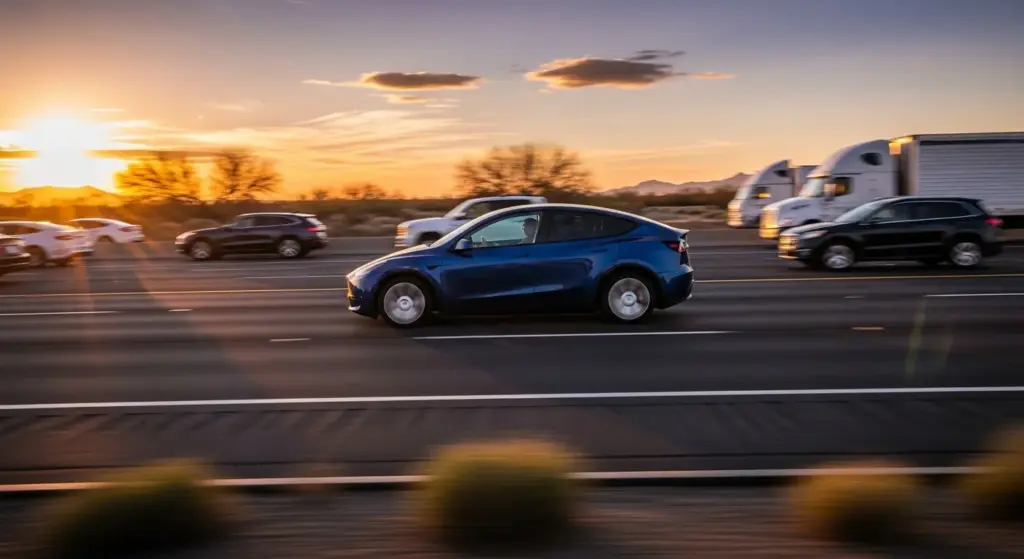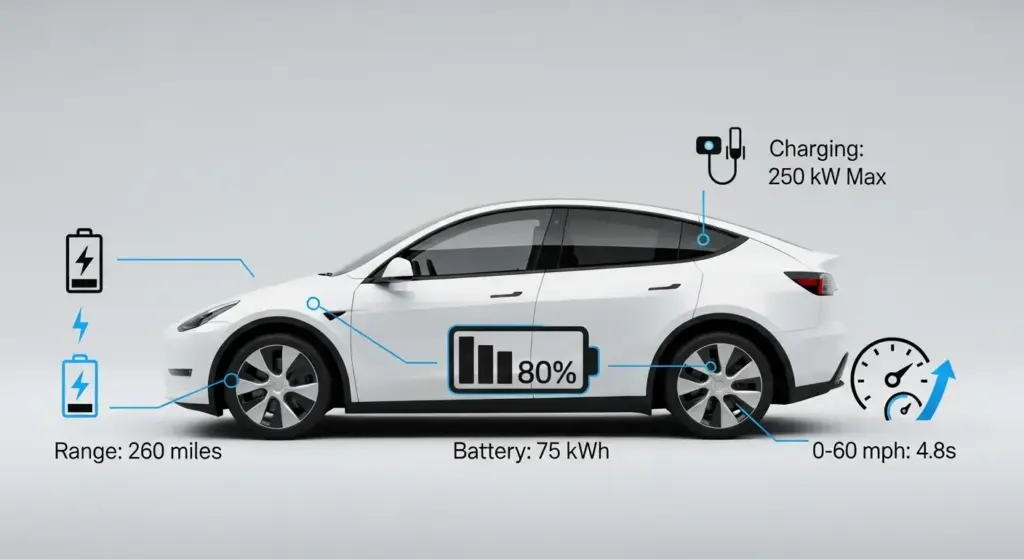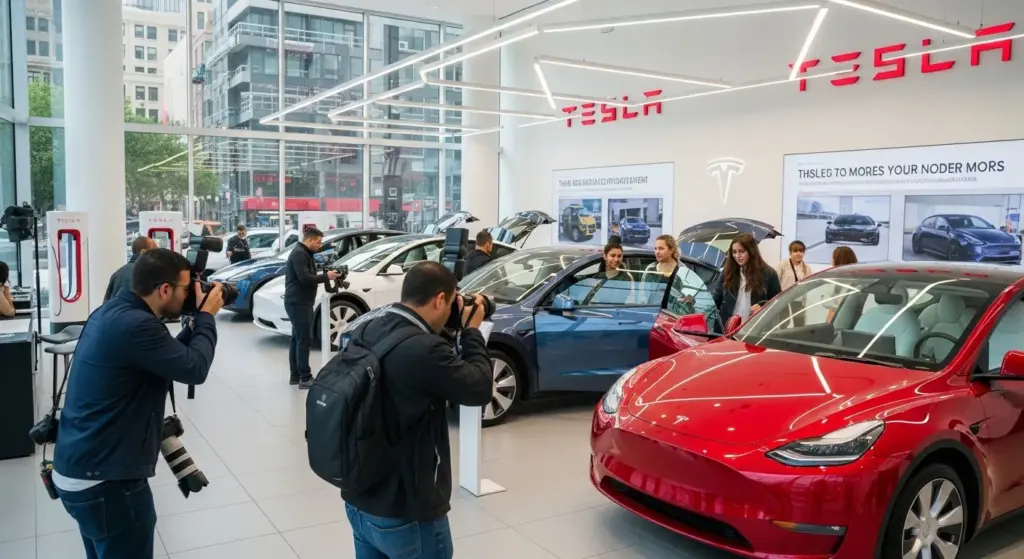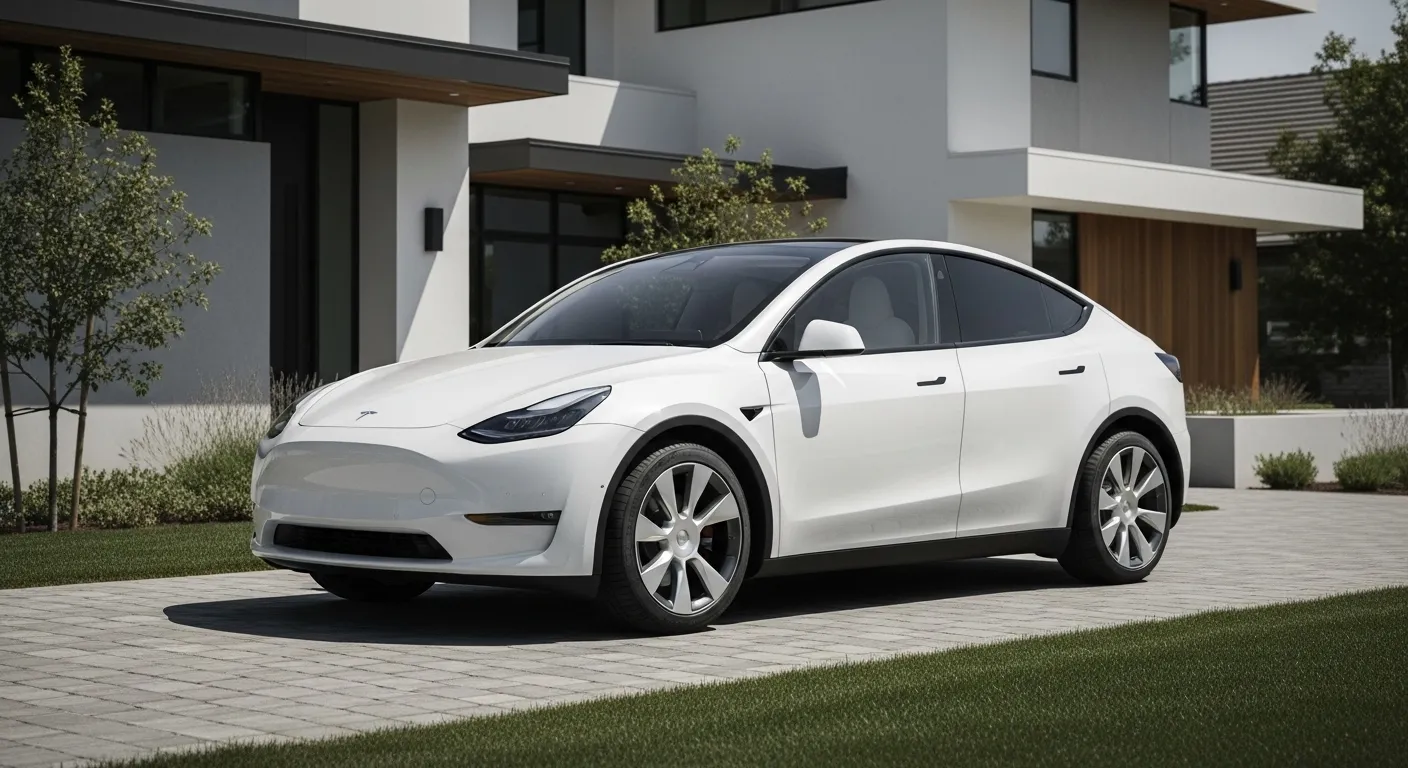Tesla’s unveiling of a lower-cost base variant of the Model Y is a signal: the EV race is entering a new phase of affordability. For U.S. buyers lingering on the fence, the difference between $45,000 and ~$38,000 could be the tipping point. With federal tax credits gone (or sliced), the need for more competitive pricing has never been sharper.
In hotly competitive markets like California, Texas, and Florida, EV buyers are now weighing trade-offs more than ever: do you keep all the bells and whistles, or sacrifice a few features for a model that fits your budget? Tesla’s move could shift the balance for many buyers—especially commuters, small families, or those upgrading from gasoline SUVs.
This pivot also reflects pressures facing Tesla: slowing demand, increasing competition from firms offering lower-cost EVs, and shrinking margins. The success (or failure) of this trimmed Model Y could well chart Tesla’s trajectory in the U.S. for 2026 and beyond.
What Tesla Cut (and Kept) to Hit the $38K Zone

To deliver a sub-$40K price, Tesla has pared back several features that were once considered standard on its lineup. The new “Standard” version of the Model Y omits or downgrades:
- Autosteer / full Autopilot (no lane-centering steering assist)
- Second-row touchscreen / entertainment module
- Heated rear seats, ambient lighting, premium audio systems
- Glass roof / LED lightbar styling replaced with simpler lighting and a metal or “covered glass” roof
- Fewer speakers, simpler upholstery, manual side mirrors, simpler shock absorbers
Yet Tesla retains core elements: electric drivetrain, safety hardware, basic instrument cluster, and the Tesla charging network advantages.
This is a classic “feature trade” — in effect, Tesla is telling buyers: you get essential EV performance, but not every premium frill.
Please take a look at this post as well: 2025 Harley-Davidson Pan America 1250 Special: 5 Smart Tech Upgrades You Can’t Miss
Specs Snapshot & Real-World Performance
Here’s a comparative table of key specs for the new base Model Y vs prior Model Y Premium trim:
| Specification | Model Y Standard (New) | Model Y Premium / Long-Range / Previous Base |
|---|---|---|
| Starting Price (U.S.) | ~$37,990 before incentives (or ~$39,990 in many states) | $44,000+ depending on trim |
| Estimated Range | ~321 miles (EPA estimate) | ~330–350+ miles |
| Top Speed / Acceleration | Slightly lower (due to battery / tuning cuts) (not officially confirmed) | Higher in higher trims |
| Powertrain | Rear-wheel drive (single motor) | RWD or AWD depending on trim |
| Charging / DC Fast | Compatible with Tesla Supercharger network | Same access |
| Features Removed | Autosteer, ambient lighting, heated rear seats, premium audio, second-row screen, LED lightbar | All full features |
| Suspension / Comfort | Passive dampers (versus more advanced in pricier models) | Active or adaptive in higher trims |
| Interior / Upholstery | Textile accents, simpler materials | Premium materials, more customization options |
Real-world impact: On daily commutes and highway travel, the base Model Y still offers robust range and zero-emissions driving. For long road trips, the slightly reduced range means more frequent stops—but with Tesla’s charging coverage, that gap may not feel huge. The loss of Autosteer is hands-on: drivers give up the optional semi-automated assistance that many had come to expect.
For families, the omission of heated rear seats and rear entertainment might sting. But for solo riders, couples, or buyers upgrading from older ICE SUVs, the trade might be acceptable—especially if the price makes the leap to EV more doable.
How It Stacks Up: Rivals & Previous Generations

Compared to previous base Model Y trims, this lower-cost version is a leaner, more cost-focused package. While the older entry Model Y gave more standard conveniences, that came at a higher price. Some might argue this new version is a step backward in features—but sometimes necessary to widen the addressable market.
Against rivals like the Hyundai Ioniq 5, Kia EV4, Ford Mustang Mach-E base models, or Chevrolet Equinox EV, Tesla’s lower price helps it remain competitive. Those rivals often pack solid features even at lower trims, so Tesla’s stripped approach will be scrutinized.
If you compare to off-road or all-terrain EV bikes or smaller urban EVs, the Model Y remains a full SUV product—not a direct competitor. But for urban riders or fanatics who cross over from bikes to small EVs, it’s interesting to see how Tesla is pushing pricing downward just as micro-mobility and EV bikes expand.
Please take a look at this post as well: Harley-Davidson Sprint: The $6,000 Motorcycle That Could Change the Game
Market Reaction, Timing, and Risks

The timing coincides with the end of the $7,500 U.S. federal EV tax credit, prompting Tesla to introduce the lower price to offset buyers’ lost incentive. Investors hit the stock hard: Tesla’s shares dropped 4-5% after the announcement, suggesting disappointment in margin pressures and whether this move will generate fresh demand.
Some analysts argue that the price cut is more of a “pricing lever” than a true product innovation. The risk: cannibalizing higher trim sales, squeezing margins further, or frustrating buyers who expect more value per dollar.
Supply chain, battery cost pressures, and Tesla’s need to maintain profitability mean that the success of this base version will hinge on scale and cost control. If Tesla can sell high volume, they may recoup lost per-unit margin. If not, it could be a costly gamble.
Please take a look at this post as well: Himalayan 650 Adventure Bike Rumors – Specs, Release Timeline & Competition
Who Should (And Shouldn’t) Consider the New Base Model Y

Good candidates:
- Buyers for whom a $5K to $8K price difference opens the possibility of switching to EV now rather than later
- Commuters or small families prioritizing range and reliability over interior luxuries
- Current ICE-SUV owners ready to dip toes into Tesla ownership without investing in top trims
Less ideal:
- Buyers who valued Autosteer, rear seat comfort, premium audio, or every possible feature
- Tech enthusiasts expecting Tesla’s full modern feature set
- Families or passengers who will feel the pain of stripped amenities on longer journeys
Conclusion
Tesla’s bold move to introduce a $37,990-ish base Model Y shows that the EV market is maturing: luxury features are being traded for price access. For many U.S. buyers who were previously priced out, this might be the bridge into EV adoption.
The new Model Y offers solid fundamentals (range, drivetrain, charging) but at the expense of many premium features. Whether the market rewards this trade depends on whether buyers are willing to accept “less” for “cheaper.” For commuters and price-conscious buyers, this is a compelling option. For those who want the full Tesla experience, the higher trims will still carry appeal.
If Tesla can sell in sufficient volumes and maintain cost discipline, this could be a watershed moment in mass-market EV adoption. But if margin pressures bite or buyers recoil at stripped features, it may serve as a cautionary boundary for how far premium brands can strip to chase affordability.
